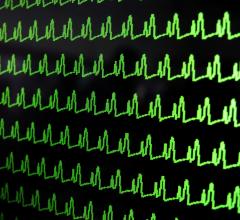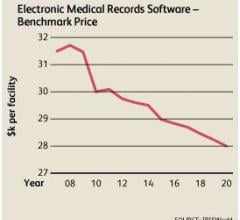
April 10, 2015 — Health information exchange enables clinicians to have secure access to a patient's medical record including details on care received at other locations, but detailed identification of those locations is typically not available. Regenstrief Institute investigator Brian Dixon, MPA, Ph.D. will highlight this interoperability problem and propose strategies in a presentation to the 2015 Healthcare Information and Management Systems Society's Conference and Exhibition.
The record may indicate that care was provided by a specific health system. But can the receiving clinician decipher the name? What is IUH or CHN? Where within the health system was care delivered? Was the procedure performed in an emergency department, an outpatient clinic or a doctor's office?
A physician may need to know this information to judge what type of prior care a patient is likely to have received. For example, the care provided at a busy urban emergency room is different from that which is offered at a private physician's office. Information about the type of facility is even more valuable for reimbursement, regulatory and research purposes.
Although they are not typically used in medical records, well-known standards exist for accurately describing a specific geographic location (i.e. latitude and longitude). These coordinates are of limited use, however, because no standard methodology exists to further describe exactly where and at what type of facility a medical encounter took place.
"Accurately and precisely identifying the facilities where healthcare is delivered and sending that information to the patient's current health provider could have significance for follow up care, quality control and population health as well as being important to system improvement efforts," said Dixon, who is an assistant professor at the Indiana University Richard M. Fairbanks School of Public Health.
Dixon and Regenstrief Institute colleagues first became aware of the problem when the institute partnered with the U.S. Social Security Administration (SSA) to shorten and improve the disability case determination process. Between 2011 and 2013, Regenstrief electronically delivered nearly 8,000 medical records from multiple healthcare systems to SSA via the Indiana Network for Patient Care as part of a pilot project involving the eHealth Exchange (formerly known as the Nationwide Health Information Network). In 2014, the SSA received over 25,000 medical records via the INPC, a health information technology platform developed by Regenstrief and now operated by the Indiana Health Information Exchange.
But SSA disability determination experts were unable to decipher some facility names and match them with the information provided by claimants. For a solution to the problem, Dixon and colleagues drew upon the lessons learned from the Regenstrief Institute's development of Logical Observation Identifiers Names and Codes (LOINC), the standard medical vocabulary developed to enable the exchange of health information between facilities, and were able to identify high-volume facilities within the INPC that had information needed by the SSA.
Dixon also conducted a survey of health information exchanges outside Indiana and found that the issue of facility standardization, critical to regional and eventually national expansion of electronic health information exchange, had not been solved elsewhere.
"We need standardization of facilities identification sufficient to scale up across the country," Dixon said. "While there are pros and cons for different strategies, existing options developed for drug identification, clinical procedures, billing and other uses are not a good fit.
"You can't put a round peg into a square hole. We need to come up with a way to exchange data on facility identification in a standardized way that can be universally adopted to ensure interoperability," he said.
At HIMSS, Dixon will propose an information model which he describes as a "rough draft" system for capturing, storing and managing information about facilities at all levels of the health system.
For more information: www.regenstrief.org


 June 14, 2024
June 14, 2024 








